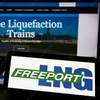Charterers Remain Optimistic Despite Small Downturn
Overall confidence levels in the shipping industry fell slightly during the three months to August 2014, according to the latest Shipping Confidence Survey from international accountant and shipping adviser Moore Stephens. They are, however, still higher than at the corresponding period twelve months ago, and confidence among charterers actually reached a six-year high. The amount of anticipated significant new investment over the next twelve months was down over the three-month period, as were levels of expectation with regard to improved freight rates in the dry bulk and container ship sectors. Once again, the dominating concern among respondents was the perceived adverse effect on the market of an excessive amount of tonnage.
In August 2014, the average confidence level expressed by respondents in the markets in which they operate was 6.1 on a scale of 1 (low) to 10 (high), down from the 6.3 recorded in May 2014. This compares to the 5.9 recorded in August 2013, and to the record high of 6.8 when the survey was launched in May 2008.
Charterers expressed a significant increase in confidence this time, up from 6.1 to 6.7, the highest figure recorded by this category of respondent in the life of the survey. Owners (up from 6.1 to 6.2) were also more confident. But confidence on the part of managers and brokers was down, from 6.5 to 6.2 and from 6.0 to 5.3, respectively. The biggest fall in confidence was in fact that expressed by uncategorised respondents (down from 6.7 to 5.9).
Geographically, confidence was down in all main areas canvassed by the survey. In Asia, the fall was from 6.4 to 6.0, in Europe from 6.2 to 6.1, and in North America from 6.5 to 6.2.
A number of respondents referred to the adverse effect which political and economic developments are having on the market. “The economic outlook is poor globally,” said one, while another emphasised, “The shipping markets are still unpredictable, and much will depend on political and economic developments between certain nations and on the easing or intensifying of economic embargoes.” Elsewhere it was noted, “Political risks have increased, and this will adversely impact the market.” Not everybody agreed, however, with one respondent noting, “Confidence is positive, with US economic growth positive and the global economy on a path to recovery, easing capital flow into the market.”
“We had been anticipating a better year in 2014,” said one respondent, “but that has not materialised to date, so we now look to 2015, when we anticipate a better year, with an improvement between supply and demand in terms of tonnage.” This was a sentiment shared by another respondent, who noted, “The supply/demand balance will come back into owners’ favour in 2015, when we will see a stronger market.”
Others, meanwhile, were less optimistic. “There is no economic basis for substantial growth,” said one, while another observed, “The market is stuck at a level characterised by low income and low expenditure, which now seems to be the norm, despite expectations of a speedy recovery following the recession.” Still another warned, “We have seen a very prolonged period of poor freight rates and, unless we witness a real improvement in the next few months, some owners – especially those who bought expensive ships – will be in trouble.”
Despite evidence to suggest that measures to reduce overtonnaging in the industry are meeting with some success, a number of respondents warned that there were still too many ships – both in service and on order – for the cargoes available. “Everything depends on the need to restrict ordering,” said one, while another noted, “The market is in danger of collapse as a result of newbuilding speculation based on misleading projections. The market will return to health once non-shipowning operators and cash-strapped owners exit the industry.”
“Overtonnaging in the tanker and bulk carrier markets continues to have an adverse effect on freight rates,” complained one respondent, while in similar vein another noted, “The most important thing is to stop building new ships, especially tankers and bulkers.”
One respondent felt that the current market represented “a period of relative calm before the next wave of eco-design newbuildings starts hitting the water, at which point we can expect a return to choppy conditions.” And another still saw reasons for optimism, noting, “Although shipowners still order new vessels in an already oversupplied market, the cash surplus from the last boom is running out and decisions are being taken with greater care and thought, and are usually tied in to specific new projects and requirements. This is likely to slow down deliveries, while scrapping also remains attractive for older and less efficient tonnage.”
The likelihood of respondents making a major investment or significant development over the next twelve months was down on the previous survey, on a scale of 1 to 10, from 5.8 to 5.4, the lowest figure recorded in this respect since November 2012. The figures for all categories of respondent were down, most notably in the case of charterers, who rated the prospect of new investment at just 5.5, as opposed to 6.4 three months ago. Managers’ expectations, meanwhile, were down from 6.2 to 5.6, while owners recorded a drop from 5.8 to 5.6.
Just 21 percent of charterers (down from 68 percent last time) rated the likelihood of making a new investment over the next twelve months at 7.0 out of 10.0 or higher. Meanwhile, 41 percent of owners and 38 percent of managers were of like mind, compared to 43 percent and 56 percent respectively last time.
Geographically, expectation levels of major investments were down in Asia, from 5.9 to 5.2 (the lowest figure since May 2012), in Europe, from 5.7 to 5.4, and from 5.9 to 5.6 in North America, where just 22 percent of respondents rated the likelihood of making a new investment over the next twelve months at 7.0 out of 10.0 or higher, as opposed to 62 percent in the previous survey.
One respondent said, “There is too much speculative money coming into the market at present, which will lead to an over-supply in due course.” Another observed, “The current problems in shipping have been caused in part by shipowners making speculative investments in new ships.”
Demand trends, competition and finance costs, in that order, once again featured as the top three factors cited by respondents overall as those likely to influence performance most significantly over the coming twelve months. The overall numbers for demand trends and competition were unchanged from last time at 23 percent and 20 percent respectively, while the number of respondents citing finance costs fell from 15 percent to 14 percent this time. Tonnage supply (up one percentage point to 14 percent) featured in equal third place, while operating costs (unchanged at 10 percent) and fuel costs (down one percentage point to 9 percent) featured in fifth and sixth places respectively.
Demand trends, although down 4 percentage points to 23 percent, remained the number one performance-affecting factor for owners. Tonnage supply (up one percentage point) and competition (up 3 percentage points) featured in equal second place, on 18 percent. For managers, meanwhile, competition (unchanged at 21 percent) remained in first place, followed by finance costs (up 2 percentage points to 17 percent) and demand trends (up one percentage point to 15 percent). For charterers, demand trends, although down 5 percentage points to 25 percent, remained in first place, ahead of competition (down from 21 percent to 16 percent) and tonnage supply (15 percent).
Geographically, demand trends were the most significant factor for respondents in Europe (unchanged at 24 percent) and North America (up 7 percentage points to 28 percent), but in Asia it was competition (up 2 percentage points to 21 percent) which topped the list, ahead of demand trends (down from 22 percent to 20 percent). Competition was the second most significant performance-affecting factor in Europe (unchanged at 19 percent) and in North America (up 3 percentage points to 20 percent). In both Europe and Asia, tonnage supply featured in third position, with 15 percent, while in North America it was finance costs (down by one percentage point to 15 percent) which occupied third place.
One respondent noted, “Operating and crew costs are the biggest challenge,” while another warned, “New regulations such as the sulphur rules which incept on 1 January 2015 will cause significant problems for many owners. The available techniques are very expensive and, in many cases, not possible to install on ships.”
The number of respondents overall who expected finance costs to increase over the next twelve months was down by 2 percentage points to 39 percent, the lowest figure since May 2013. All main categories of respondent recorded a fall in numbers in this regard, in the case of charterers by 19 percentage points to 29 percent. The number of owners expecting finance costs to rise was down by 3 percentage points to 39 percent, while for managers and brokers the figures were 36 percent (down 3 percentage points) and 44 percent (down 6 percentage points) respectively.
The number of respondents in Asia anticipating an increase in the cost of finance was down by 9 percentage points to 45 percent, while in both Europe and North America the numbers were up - from 34 percent to 35 percent, and from 62 percent to 67 percent respectively.
“Finance is still difficult for companies which have limited equity,” said one respondent, “so the future looks pretty uncertain in the absence of really strong global economic growth.” Another maintained, “The banks should support the industry, otherwise there is a danger that smaller players will be badly affected, or eliminated from the industry altogether, by big shipping lines and tonnage alliances.” Elsewhere it was noted, “The lack of finance/credit is crippling the shipping industry.”
Turning to the freight markets, there was a fall in the number of respondents anticipating higher rates in the dry bulk and container ship trades, while expectations in the tanker sector remained unchanged from last time.
The number of respondents overall expecting higher rates in the tanker sector over the next twelve months was unchanged at 41 percent, the second-highest figure since May 2011. Managers (down 3 percentage points to 43 percent) were the only category of respondent to record a fall in numbers anticipating higher rates. Charterers recorded a 17 percent increase, to 38 percent, in levels of expectation of improved tanker rates, while the numbers were also up for owners (from 37 percent to 41 percent) and for brokers (by 10 percentage points to 58 percent).
Geographically, the prospects for increased tanker rates were deemed significantly lower this time in North America (down by 21 percentage points to 29 percent), one percentage point higher in Europe at 42 percent, and unchanged in Asia at 40 percent.
One respondent said, “We expect the market for large tankers to improve, but anticipate little movement in the product tanker sector.”
In the dry bulk sector, meanwhile, there was a 6 percentage-point fall, to 47 percent, in the overall numbers of those anticipating rate increases. Charterers were the only category of respondent to record an increased expectation (from 42 percent to 64 percent) that rates would increase over the coming year. The numbers for owners were down (from 57 percent to 55 percent), as were those for managers (from 45 percent to 43 percent) and brokers (from 59 percent to 43 percent). Expectations of higher dry bulk rates over the next twelve months were up in Asia from 49 percent to 55 percent, but down in Europe from 55 percent to 47 percent, and in North America, by 50 percent to 14 percent.
One respondent said, “The dry bulk market is characterised by weakening growth in demand and continued excessive fleet growth.” Another observed, “We expect any increase in dry bulk rates to be of modest proportions.”
In the container ship market, meanwhile, the number of respondents expecting rates to increase over the coming twelve months was down by 3 percentage points to 31 percent. All main categories of respondent, with the exception of owners, were less confident of rate increases this time than they were three months ago. Expectations on the part of owners were up by 6 percentage points to 42 percent, but charterers (down 6 percentage points to 40 percent), managers (down from 35 percent to 18 percent), and brokers (16 percentage points lower at 25 percent) were of a different mind. Geographically, expectations of improved container ship rates were down in Asia, from 38 percent to 32 percent, but up by 2 percentage points in Europe to 34 percent.
Moore Stephens shipping partner, Richard Greiner, says, “The slight decrease in confidence recorded over the three-month period covered by the survey coincides with a deterioration in the political situation in areas of the Middle East and Ukraine. Shipping operates on a global stage, and must inevitably be affected by international events.
“However, the responses to our survey confirm that other factors have also helped to undermine confidence. Chief among these, not for the first time, is concern about overtonnaging. There are too many ships to carry the cargoes currently available in certain trades, despite recent efforts to improve the imbalance. As a result, the freight markets are not producing the returns that the industry is looking for. But this must be seen as work in progress. The industry is still recovering from the effects of a prolonged period of global economic downturn.
“Operating costs and the bill for achieving regulatory compliance are also a continuing cause for concern, and they are costs which owners and operators must factor into their sums. As one respondent noted, if you think the cost of achieving safety is high, try having an accident. These are also costs of which the new comparatively short-term, non-shipping money which continues to come into the industry will need to be aware.
“Overall, confidence in shipping is higher than it was twelve months ago. It continues to attract investors both from within and outside the industry. Moreover, both charterers and owners, the prime movers who make the industry go round, are more confident now than they were in the previous survey. The peaks reached by the freight markets in the mid-2000s may not be achievable for the foreseeable future, but today’s industry has moved out of foothill territory and has reason to be looking up, rather than down.”











